Best position to sleep with acid reflux. Best Sleeping Positions for Acid Reflux: Alleviating Nighttime GERD Symptoms
How does sleeping position affect acid reflux. What are the best sleeping positions for GERD sufferers. Why is left-side sleeping beneficial for acid reflux. How can elevating your head help reduce nighttime GERD symptoms. Which sleeping positions should people with acid reflux avoid.
Understanding Acid Reflux and Its Impact on Sleep
Acid reflux, also known as gastroesophageal reflux disease (GERD), is a common condition that affects up to 13% of the global population at least once a week. For many sufferers, nighttime symptoms can significantly disrupt sleep quality. In fact, 25% of people with GERD experience poor sleep due to nocturnal gastroesophageal reflux (GER).
GERD occurs when stomach contents escape into the esophagus, causing symptoms such as heartburn, regurgitation, and a sour taste in the mouth. At night, these symptoms can be particularly troublesome, leading to coughing, choking, and frequent awakenings.
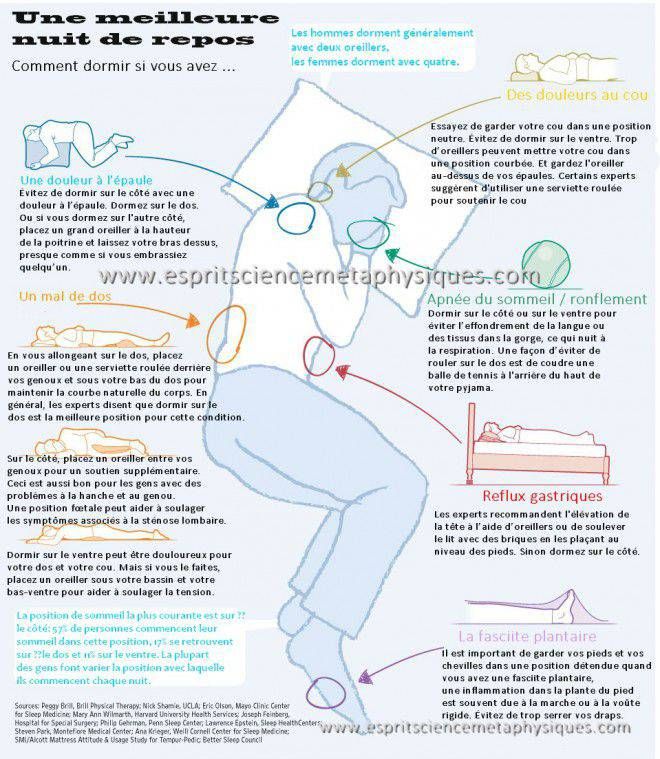
Why does acid reflux worsen at night?
Several factors contribute to the increased severity of acid reflux symptoms during sleep:
- Gravity: When lying down, the lack of gravitational assistance allows stomach acid to flow back into the esophagus more easily.
- Reduced swallowing: During sleep, we swallow less frequently, which means less saliva to neutralize acid and push it back into the stomach.
- Delayed gastric emptying: Lying down shortly after eating can slow digestion and increase the likelihood of reflux.
The Left-Side Advantage: Optimal Sleeping Position for GERD
Research has shown that sleeping on your left side can significantly reduce acid reflux symptoms compared to other sleep positions. This beneficial effect is due to the anatomy of the digestive system and the influence of gravity.
Why is left-side sleeping effective for acid reflux?
- Stomach position: When lying on the left side, the stomach sits below the esophagus, making it harder for acid to flow upwards.
- Faster acid clearance: If reflux does occur, gravity helps return the acid to the stomach more quickly than when sleeping on the right side or back.
- Reduced liquid reflux: Left-side sleeping tends to produce more gaseous reflux, which is generally less distressing than liquid reflux.
Studies have consistently demonstrated that symptoms are less frequent and less severe when individuals sleep on their left side compared to other positions. For those struggling with nighttime GERD symptoms, adopting this sleep position could provide significant relief.
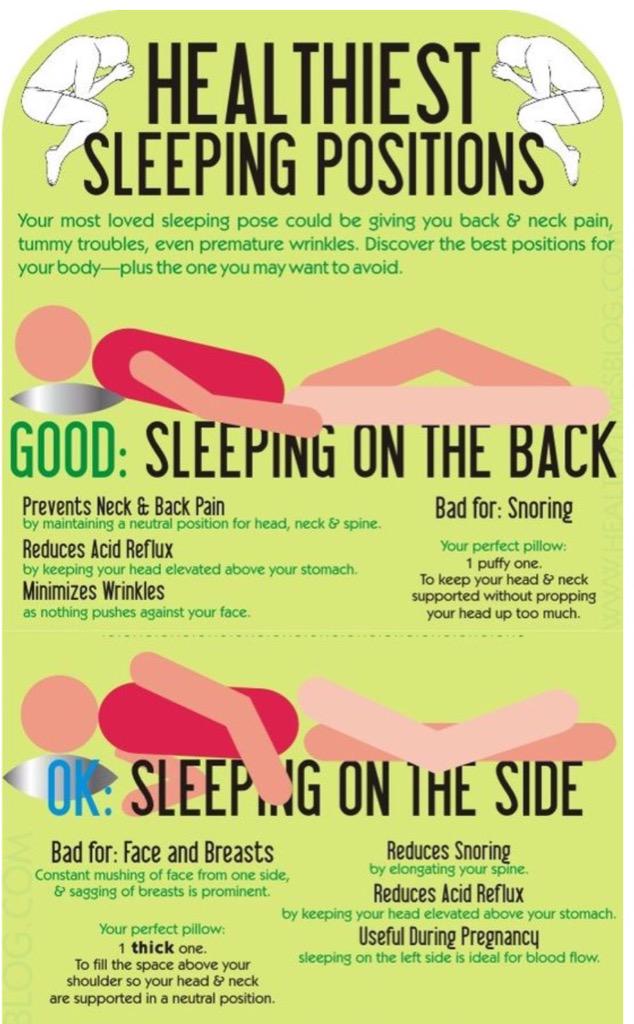
Elevating Your Head: Another Effective Strategy
In addition to left-side sleeping, elevating your head and upper body can further alleviate acid reflux symptoms during sleep. This position helps harness the power of gravity to keep stomach contents where they belong.
How much elevation is needed?
Experts recommend raising the head of the bed by 6 to 8 inches. This can be achieved by:
- Using a wedge pillow designed for acid reflux relief
- Placing blocks under the head of the bed
- Using an adjustable bed frame
It’s important to note that simply stacking regular pillows is not as effective and may lead to neck strain. The goal is to elevate the entire upper body, not just the head.
Sleep Positions to Avoid with Acid Reflux
While left-side sleeping and elevation can help, certain sleep positions may exacerbate GERD symptoms:
Right-side sleeping
Sleeping on your right side can increase the frequency and severity of acid reflux episodes. This is because the lower esophageal sphincter (LES) relaxes more in this position, allowing stomach contents to flow back more easily.

Sleeping flat on your back
While back sleeping can be beneficial for other conditions, it’s not ideal for GERD sufferers. In this position, stomach acid can pool in the esophagus, leading to prolonged acid exposure and increased symptoms.
Sleeping on your stomach
Prone sleeping puts pressure on the stomach and can force acid up into the esophagus. Additionally, this position often requires turning the head to one side, which can cause neck strain.
Lifestyle Modifications to Complement Sleep Position Changes
While optimizing your sleep position is crucial, combining this strategy with lifestyle modifications can further improve GERD symptoms and sleep quality.
Dietary adjustments
- Avoid large meals close to bedtime
- Limit intake of fatty foods, spicy foods, caffeine, and alcohol
- Wait at least 3 hours after eating before lying down
Weight management
Maintaining a healthy weight can reduce pressure on the stomach and lower esophageal sphincter, potentially decreasing reflux episodes.

Smoking cessation
Smoking can weaken the lower esophageal sphincter, making it easier for stomach acid to flow back into the esophagus. Quitting smoking can help alleviate GERD symptoms.
Stress reduction
Stress can exacerbate GERD symptoms. Incorporating stress-management techniques such as meditation, deep breathing, or yoga may help reduce nighttime reflux.
When to Seek Medical Advice for Nighttime Acid Reflux
While sleep position changes and lifestyle modifications can significantly improve GERD symptoms for many people, persistent or severe symptoms may require medical intervention.
When should you consult a doctor about acid reflux?
- Symptoms occur more than twice a week
- Nighttime reflux consistently disrupts sleep
- Over-the-counter medications provide little or no relief
- You experience difficulty swallowing or unexplained weight loss
- Symptoms are accompanied by persistent coughing or wheezing
A healthcare provider can evaluate your symptoms, recommend appropriate treatments, and rule out any underlying conditions that may be contributing to your acid reflux.

Advanced Treatment Options for Chronic Nighttime GERD
For individuals who continue to struggle with nighttime acid reflux despite lifestyle changes and optimized sleep positions, several advanced treatment options are available:
Prescription medications
- Proton pump inhibitors (PPIs): These drugs reduce stomach acid production and are often more effective than over-the-counter options for severe GERD.
- H2 receptor blockers: These medications can be used in combination with PPIs or as an alternative for some patients.
Surgical interventions
In cases where conservative treatments are ineffective, surgical options may be considered:
- Fundoplication: A procedure that strengthens the lower esophageal sphincter by wrapping the top of the stomach around it.
- LINX device: A ring of magnetic beads placed around the lower esophageal sphincter to reinforce its closing function.
These interventions can provide long-term relief for chronic GERD sufferers, but they should be carefully considered in consultation with a gastroenterologist or surgeon.

The Role of Sleep Hygiene in Managing Nighttime Acid Reflux
In addition to specific sleep positions and GERD management strategies, practicing good sleep hygiene can contribute to better overall sleep quality for those with acid reflux.
What are some effective sleep hygiene practices for GERD sufferers?
- Maintain a consistent sleep schedule, even on weekends
- Create a relaxing bedtime routine to wind down before sleep
- Ensure your bedroom is dark, quiet, and cool
- Avoid electronic devices for at least an hour before bed
- Use comfortable, supportive bedding that facilitates proper sleep positioning
By combining these sleep hygiene practices with optimal sleep positions and GERD management techniques, many individuals can significantly improve their nighttime symptoms and overall sleep quality.
Tracking and Managing Nighttime GERD Symptoms
Keeping a detailed record of your symptoms, sleep positions, and dietary habits can be invaluable in managing nighttime acid reflux. This information can help you identify triggers and assess the effectiveness of various interventions.
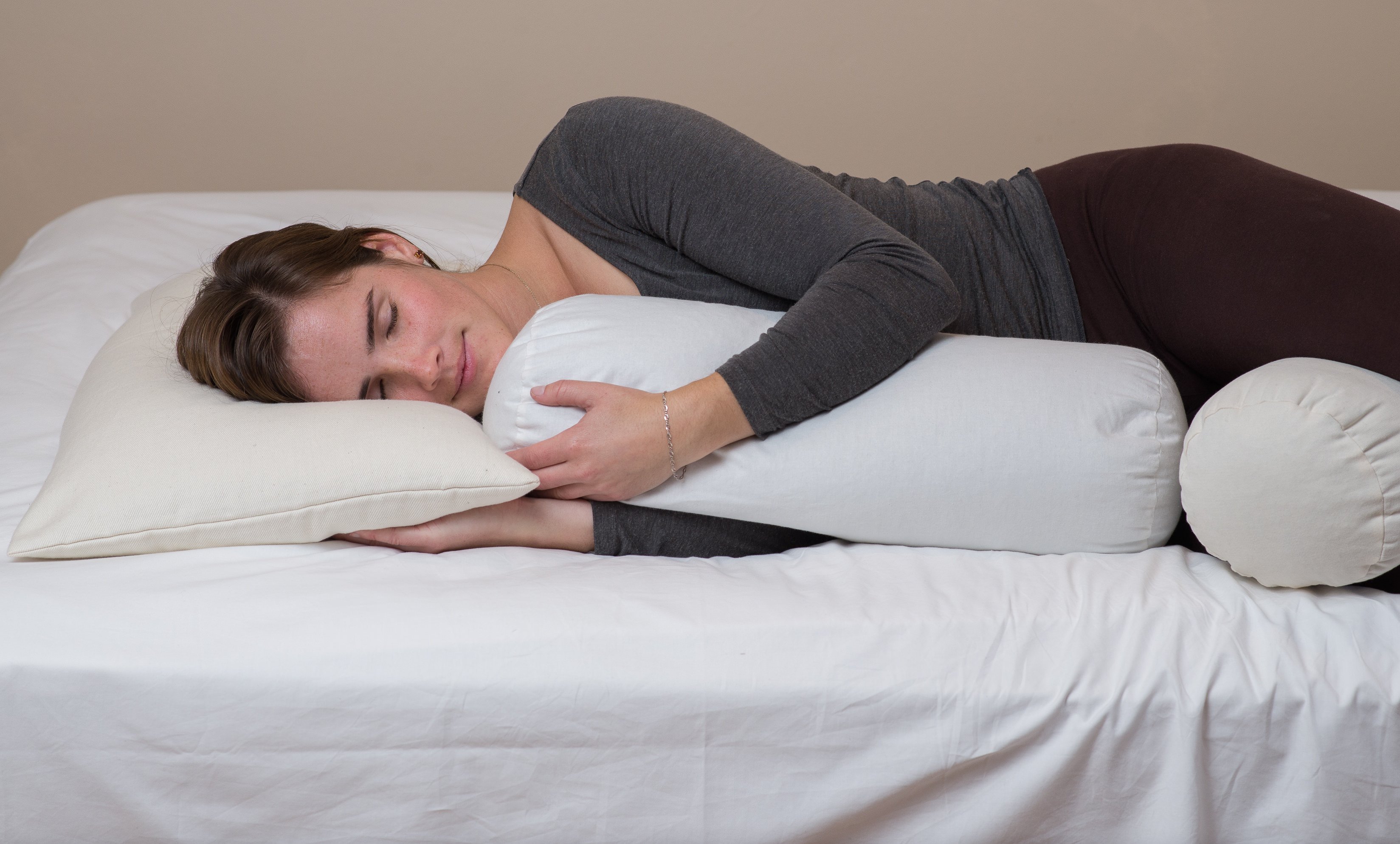
How can you effectively track your GERD symptoms?
- Use a sleep diary to record sleep positions, symptom occurrences, and severity
- Note any dietary or lifestyle factors that may have influenced symptoms
- Track the effectiveness of different sleep positions and elevations
- Consider using a smartphone app designed for GERD symptom tracking
Sharing this information with your healthcare provider can lead to more targeted and effective treatment strategies. It can also help you recognize patterns and make informed decisions about your sleep habits and GERD management.
By implementing the optimal sleep positions discussed, making necessary lifestyle adjustments, and working closely with healthcare professionals, many individuals with nighttime acid reflux can achieve significant symptom relief and improved sleep quality. Remember that managing GERD is often a process of trial and error, so patience and persistence are key in finding the most effective combination of strategies for your individual needs.
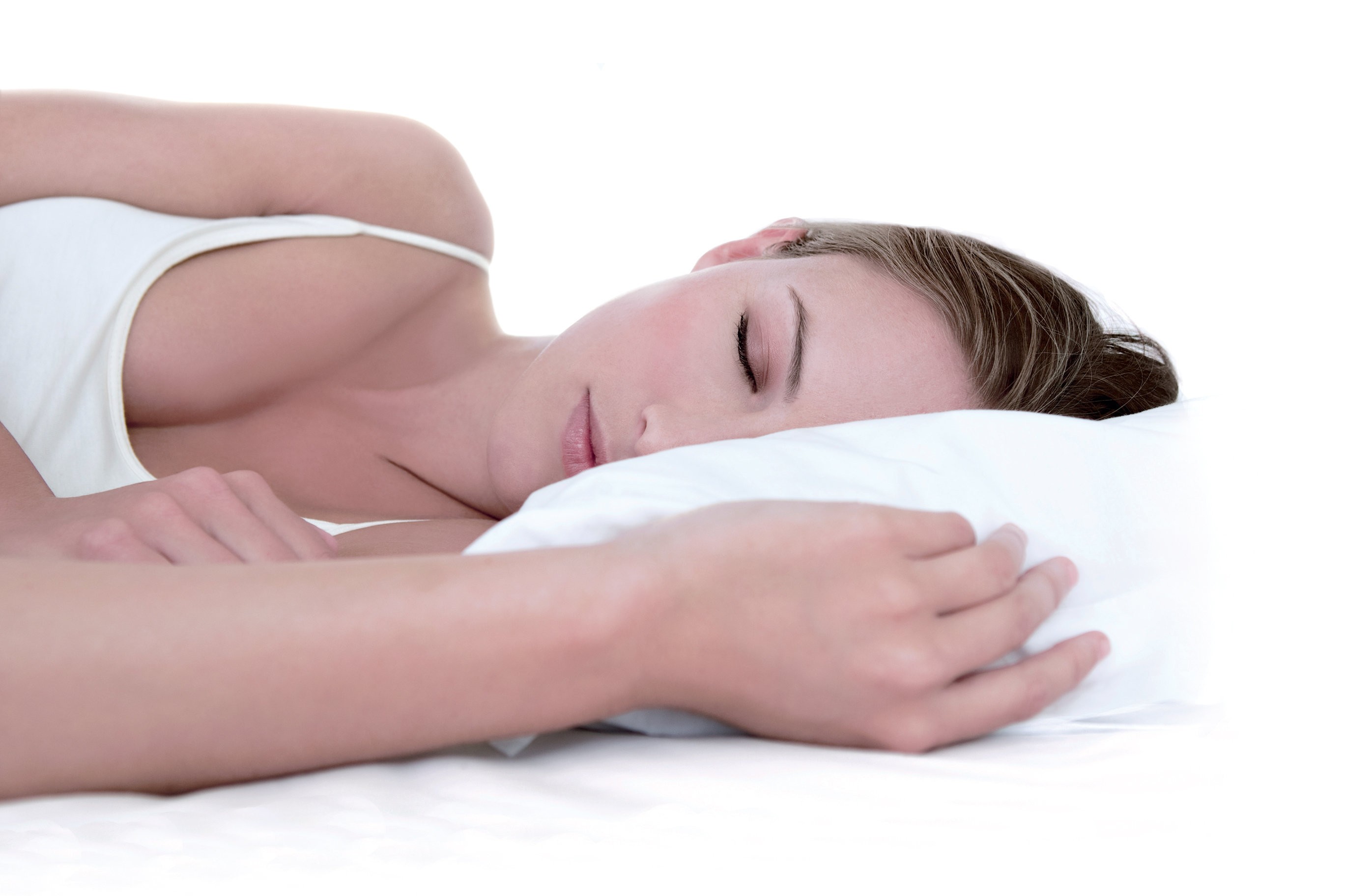
Best Sleeping Position For Acid Reflux: Sleeping with Acid Reflux
By: SleepScore Labs
|
April 22nd, 2019
Do you experience burning in your throat, regurgitation, choking, coughing, or heartburn during sleep? All of these may disturb your sleep throughout the night. But what could be the cause? Short answer: Stomach acid, when it escapes out of your stomach to the esophagus and sometimes even up into your lungs, throat, and sinuses.
People with acid reflux, or gastroesophageal reflux disease (GERD), usually experience these symptoms at night. If you’re one of them, know that you’re not alone. It’s more common than you may expect. GERD affects up to 13% of the global population at least once a week. And, 25% of people with GERD experience poor sleep, which could be from nocturnal gastroesophageal reflux (GER), a type of GERD, with the other being upright or daytime GERD.
Supine or nocturnal gastroesophageal reflux usually occurs when acid moves back up to a person’s esophagus while lying down and mostly happens at night before or during sleep. This condition may cause sleep issues and prevent a person from getting a good night’s rest.
This condition may cause sleep issues and prevent a person from getting a good night’s rest.
Let’s take a look into the sleep positions that may reduce your GERD symptoms and help you get a better night’s sleep, as well as the sleep positions to avoid because they may aggravate your symptoms at night.
What is GERD?
Gastroesophageal reflux disease (GERD) is a common chronic gastrointestinal condition that happens when the contents in the stomach escape out of it into the esophagus. The most common symptom of GERD is heartburn, which may come with a sour taste in the mouth. A person with GERD may also experience acid regurgitation, bloating, nausea, and belching.
What Causes Acid Reflux at Night?
Acid reflux happens when the muscles at the lower part of the esophagus (called the lower esophageal sphincter), which stop food from leaving the stomach, become weak or relaxed. However, gravity and anatomy play a massive role in the occurrence of nocturnal GERD symptoms.
During the day, you are more likely to be upright—standing or sitting up. So when stomach acid escapes, gravity and saliva quickly return the content to the stomach. You’re also more likely to manage GERD symptoms by staying upright, swallowing saliva, or taking antacids when you’re awake.
Plus, when upright, your esophagus naturally flows down into your stomach. This quick return of acid to your stomach typically makes your symptoms shorter and minimizes the potential harm acid can cause to the delicate lining of your esophagus.
Evidence shows that acid reflux usually happens in the first two or three hours of sleep. It usually occurs when a person lays down soon after consuming heavy meals. Studies suggest that those with GERD are more likely to experience acid reflux when they consume heavy meals late at night (about two hours before bedtime).
Other factors that may trigger acid reflux include
- Consuming fatty foods, spicy foods, alcohol, and caffeine
- Smoking tobacco
- Stress
- Pregnancy
- Weight gain
- Taking drugs that affect the functioning of the esophagus like anticholinergic drugs (e.
 g., antidepressants and muscle relaxants) and anti-inflammatory drugs (like diclofenac and ibuprofen)
g., antidepressants and muscle relaxants) and anti-inflammatory drugs (like diclofenac and ibuprofen)
Acid reflux sleeping positions
You don’t have to sleep sitting upright to take advantage of the effects of gravity and anatomy on the occurrence of GERD. Still, how you sleep can directly affect how often you feel symptoms, how severe those symptoms are, and how long the acid sits in your esophagus.
The good news is that you can drastically change your nights by changing the way you sleep. But first, consult with your doctor if you suspect you have GERD or any other condition that may be disturbing your sleep.
Left Side
Sleep on your left side. Gravity will work in your favor on your left side as your stomach now stays below your esophagus, making reflux more difficult.
Should stomach acid escape, gravity can return it to your stomach quicker than when on your right side or on your back which is why the left is usually the best side to sleep on to avoid acid reflux. Plus, lying down on your left side produces reflux symptoms that tend to be more gaseous, which may be annoying but much less distressing than liquid reflux that comes with lying down on your right side.
Plus, lying down on your left side produces reflux symptoms that tend to be more gaseous, which may be annoying but much less distressing than liquid reflux that comes with lying down on your right side.
Studies show that symptoms are less frequent and less severe when a person sleeps on their left side rather than their right side or back, making it a more desirable sleep position for people with GERD.
Talk to your doctor if you’re experiencing any symptoms that are affecting your sleep.
Benefits of Sleeping at an Incline
Sleeping at an incline means sleeping with your head elevated 6 to 8 inches off your body by putting extra pillows under your head and upper back.
According to an article published in the journal Missouri medicine, head of bed elevation (sleeping at an incline) is proven to manage GERD. It limits how often stomach acid escapes to the esophagus, allows your body to get stomach acid back to your stomach quicker, and reduces the symptoms of GERD. Likewise, a 2012 study suggests that elevating the head while lying down may reduce nighttime acid reflux and help manage heartburn and poor sleep from nocturnal gastroesophageal reflux.
Likewise, a 2012 study suggests that elevating the head while lying down may reduce nighttime acid reflux and help manage heartburn and poor sleep from nocturnal gastroesophageal reflux.
As long as your entire torso is raised (not just your head and neck), sleeping at an incline gives gravity a power boost to return stomach acid to your stomach and keep it there.
Speak with your doctor if you think you have GERD or any other sleep disorder so they can prescribe interventions appropriate for your case.
Sides to Avoid Sleeping on for Acid Reflux
What may be the best sleeping position for some could aggravate GERD symptoms and impair sleep in people with GERD.
Here are two sleeping positions people with GERD should avoid.
Back Sleeping: Avoid Whenever Possible
Sleeping on the back increases how often acid reflux happens at night.
When you sleep flat on your back and acid escapes from your stomach, it can flow freely into your esophagus and remain there.
Studies show that symptoms are often more frequent in this position and tend to last longer because the acid cannot flow back to the stomach.
Your symptoms may also be more severe if you have stomach fat—which pushes down on your stomach forcing contents to escape. Back sleeping should be the #1 position to avoid at night if you suffer from nighttime acid reflux.
Right Side: It’s Not Right for Acid Reflux
Position #2 to avoid at night is sleeping on your right side.
When lying on your right side, your stomach is actually above your esophagus, creating a leaky faucet spouting stomach acid into the delicate lining of your esophagus. This is especially true when your stomach is full.
Interestingly, when lying flat on your right side, your reflux symptoms tend to be more liquid, leading to regurgitation, coughing, and choking, which can be very devastating in the middle of the night. Since gravity is doing nothing for you in this position, the amount of time acid lingers in your esophagus is much longer.
A study showed that people who sleep on their right side get an earlier diagnosis of GERD when they have it than those who sleep on their left, which is telling on how severe nocturnal GERD symptoms are when a person sleeps on their right side.
Best Sleep Position for Acid Reflux: Incline + Left-Side
Sleeping on your back is generally not recommended for most people with GERD. You may also want to avoid sleeping on your right side. So what’s the best way to sleep to reduce nighttime acid reflux?
What if you take the best sleeping position, the left side, and add an incline? Could the benefits be more than the sum of its parts?
A 2015 study suggests that this is indeed the case.
The compound inclined, the left-side sleeping position makes acid reflux at night virtually impossible because your esophagus is now positioned well above the level of stomach contents, even if your stomach is full.
And, if you do reflux, gravity can quickly return the contents to your stomach. This sleep position may decrease your GERD symptoms and protect you from prolonged acid exposure to your esophagus, throat, lungs, and sinuses.
This sleep position may decrease your GERD symptoms and protect you from prolonged acid exposure to your esophagus, throat, lungs, and sinuses.
So, what’s the secret to controlling your acid reflux symptoms at night and finally getting good, quality sleep? Proper sleep positioning.
Find relief with the ideal position that maximizes the power of gravity and anatomy. Choose the MedCline Reflux Relief System, specifically designed to create and maintain the inclined, left-side position, clinically proven to be effective for natural relief from nighttime acid reflux or GERD.
Consider talking to your doctor if you experience symptoms that may be disturbing your sleep, who can best recommend treatment appropriate for your case.
Additional Tips to Control Acid Reflux at Night
You can also make some lifestyle changes that may help you manage the occurrence of acid reflux at night and promote a well-rested night.
Some of these lifestyle recommendations include:
- Limiting alcohol intake, heavy meals, fatty meals, and nighttime snacks
- Eating in the early hours of evening time
- Managing bodyweight if you’re overweight or obese
- Quitting smoking
- Avoiding drugs that may limit the functioning of the esophagus like non-steroidal anti-inflammatory drugs (NSAIDs)
A doctor may also prescribe medications or recommend surgery to treat GERD when appropriate. Talk with your doctor about your symptoms so they can prescribe treatment or lifestyle recommendations to manage your condition and improve your sleep health.
Talk with your doctor about your symptoms so they can prescribe treatment or lifestyle recommendations to manage your condition and improve your sleep health.
If you have GERD, you’re not sentenced to a lifetime of sleepless nights from acid reflux at night. By making simple tweaks to your sleeping position—choosing the Incline + Left-Side sleeping—you can take control of your symptoms and get the recovery sleep everyone deserves.
Acid Reflux at Night: Best Sleeping Positions & Treatments for GERD
When you have to sleep with acid reflux, every night can be a challenge. The burning and discomfort not only makes falling asleep harder but nearly guarantees you’ll be waking up during the night making a good night of sleep difficult.
Acid reflux and GERD are common conditions among adults in the United States— in fact, an estimated 20 percent of American adults suffer from GERD. To make matters worse, most people with acid reflux or GERD experience those symptoms at night, either during sleep or while trying to fall asleep.
Thankfully, there are ways to get a good night’s sleep even if you’re experiencing nighttime symptoms of acid reflux or GERD. But first, let’s take a look at these two conditions, and how exactly they can ruin your sleep.
What are Acid Reflux and GERD?
Acid reflux, also known as heartburn, is when stomach acid flows out of the stomach and into the esophagus. It can be caused by a number of factors, including:
- Being overweight or obese
- Pregnancy
- Hiatal Hernias
- Certain medications, including NSAIDs or benzodiazepines
- Improper Diet
A muscle called the lower esophageal sphincter creates a portal between your stomach and your esophagus. When functioning properly this muscle only opens to allow food into the stomach to digest— however, reflux symptoms occur when this sphincter doesn’t function properly. This dysfunction allows stomach acid or stomach contents to flow upwards and back into the esophagus. When this occurs, you experience the symptoms of heartburn or acid indigestion, such as an acidic taste in your mouth, discomfort in your stomach and throat, and possibly some regurgitation of stomach contents.
It’s actually normal to experience acid reflux or heartburn every so often. However, if it happens too frequently, it’s an indicator that you may have gastroesophageal reflux disease. Left untreated, GERD can result in some very serious health issues including erosion of the esophageal lining, conditions like Barrett’s Esophagus, or even esophageal cancer.
How do Acid Reflux and GERD Affect Sleep?
As mentioned above, most people with acid reflux experience their symptoms at night. The uncomfortable symptoms of nighttime heartburn can make getting proper sleep difficult, but the way we sleep can also exacerbate those symptoms.
There are a few reasons acid reflux occurs at night:
- It’s much easier for reflux to occur while lying in bed, because gravity is no longer keeping everything in your stomach down.
- Saliva can neutralize stomach acid, but you produce less at night during deep sleep. This negates the potential benefits your saliva can have if you have reflux.

- Similarly, decreased swallowing during sleep does not provide adequate pressure to keep acid in the stomach, also contributing to reflux.
There is also a connection between GERD and sleep apnea. In fact, around 60 percent of obstructive sleep apnea (OSA) patients also have GERD. While one does not cause the other, they can actually be secondary conditions for each other; Obstructive sleep apnea symptoms can be exacerbated by GERD, and GERD symptoms can be exacerbated by OSA. People who have obstructive sleep apnea often experience more severe symptoms of GERD as well.
For example, a vacuum effect is created around the stomach and throat during an apneic episode, which draws stomach acid out of the stomach and into the esophagus and throat. The chest’s negative pressure brings air in through a constricted opening due to the apnea. This creates a positive pressure in the stomach, which results in reflux, with stomach acid or contents shooting upwards from the stomach and into your throat.
If you have obstructive sleep apnea and GERD, then treatment for one could actually be an effective treatment for the other. CPAP, or continuous positive airway pressure, has been shown to be effective in treating both nighttime heartburn and obstructive sleep apnea.
One study showed that OSA patients experiencing nighttime GERD symptoms had their heartburn scores drop by sixty-two percent when they used CPAP therapy consistently. The study also found that consistent CPAP therapy over time reduced heartburn scores further.
CPAP therapy is one of the most popular and effective treatments available for obstructive sleep apnea. Thankfully, there are other ways to treat your nighttime acid reflux symptoms if you aren’t experiencing sleep apnea.
Sleep Solutions for Acid Reflux and GERD
Positive lifestyle changes can make a huge difference in your nighttime acid reflux symptoms. If you’re looking for relief, these are a great place to start!
1. Change your Sleep Position
I mentioned above how nighttime GERD symptoms can be exacerbated by how we sleep. However, you can reduce or even potentially eliminate those symptoms by changing your sleep position.
However, you can reduce or even potentially eliminate those symptoms by changing your sleep position.
Laying flat while you sleep can worsen your symptoms. Laying flat on your back makes it easier for reflux to occur, which can even cause you to wake up coughing or choking on your reflux.
Instead, I recommend sleeping on your left side. This position is most beneficial to alleviating GERD symptoms because gravity will position your stomach below your esophagus, making it harder for reflux to rise into your throat. Even if reflux occurs, gravity can return the reflux to your stomach faster than if you were sleeping on your back or right side.
Similarly, it’s also the most beneficial sleeping position for pregnant women, whether or not they are experiencing nocturnal symptoms of acid reflux.
Sleeping on your right side does not offer the same benefits though. Sleeping on your right side often produces liquid reflux, while sleeping on your left side may produce more gas if you’re still experiencing symptoms. While potentially annoying, however, the latter is much easier to tolerate than the former. So remember this if you’re planning on adjusting your sleep position: Right is wrong.
While potentially annoying, however, the latter is much easier to tolerate than the former. So remember this if you’re planning on adjusting your sleep position: Right is wrong.
2. Sleep on an Incline
If you prefer to sleep on your back, elevating your upper body can also relieve or prevent nighttime reflux. Similar to sleeping on your left side, this makes it so your stomach is lower than your esophagus and gravity will make it more difficult for reflux to rise into your esophagus.
However, propping yourself up with pillows won’t be effective, as this only elevates your head and not your upper body. Instead, try using a wedge pillow that is thickest at the top. This will keep your upper body on an appropriate incline to prevent reflux and alleviate discomfort.
3. Watch your Diet
If there are foods that trigger your heartburn, be sure to avoid these before bed. Some of these may include:
- Spicy food
- Caffeine and alcohol
- Acidic foods, like tomatoes or citrus
- Greasy foods
- Onions or Garlic
Also, make sure to stop eating 2-3 hours before you lay down— this reduces stomach acid and allows your stomach to partially empty before bed.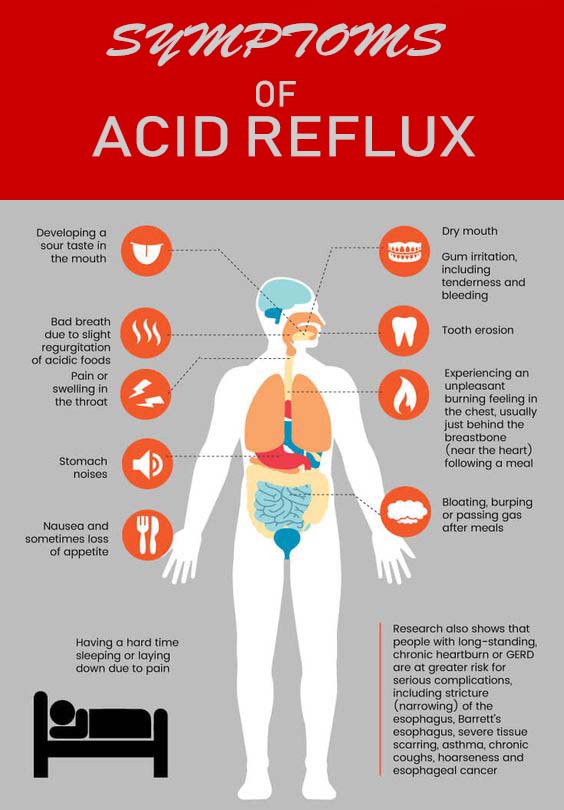 Similarly, avoiding large meals before bed can also help with acid reflux symptoms.
Similarly, avoiding large meals before bed can also help with acid reflux symptoms.
Weight loss can also help prevent reflux. Excess weight puts more pressure on the stomach and the diaphragm, which contributes to acid reflux and GERD. Losing that extra weight can remove that pressure and help relieve your symptoms.
When to Seek Additional Help
Often sleep disturbances can be alleviated or prevented with some simple changes. In cases where lifestyle changes don’t help your nighttime symptoms though, it’s important to consult your doctor about further treatment options. For severe cases of acid reflux, treatment options can range from taking medication to even receiving special surgery.
If you find that you’re struggling to sleep even beyond your acid reflux symptoms, it’s possible an undiagnosed sleep disorder is to blame. If you think disorders like obstructive sleep apnea or insomnia are contributing to your poor sleep quality, be sure to consult your doctor or a sleep expert. They can provide a diagnosis and help you find the treatment options that work best for you.
They can provide a diagnosis and help you find the treatment options that work best for you.
To find accredited sleep experts in your area, check out this tool provided by the American Academy of Sleep Medicine.
Acid reflux symptoms can really ruin your night and make it impossible to get a good night’s sleep. Thankfully though, there are easy and holistic lifestyle changes you can make to ensure reflux is a thing of the past. Give them a try and see how you feel!
About The Author
Michael Breus, Ph.D is a Diplomate of the American Board of Sleep Medicine and a Fellow of The American Academy of Sleep Medicine and one of only 168 psychologists to pass the Sleep Medical Specialty Board without going to medical school. He holds a BA in Psychology from Skidmore College, and PhD in Clinical Psychology from The University of Georgia. Dr. Breus has been in private practice as a sleep doctor for nearly 25 years.
Dr. Breus is a sought after lecturer and his knowledge is shared daily in major national media worldwide including Today, Dr.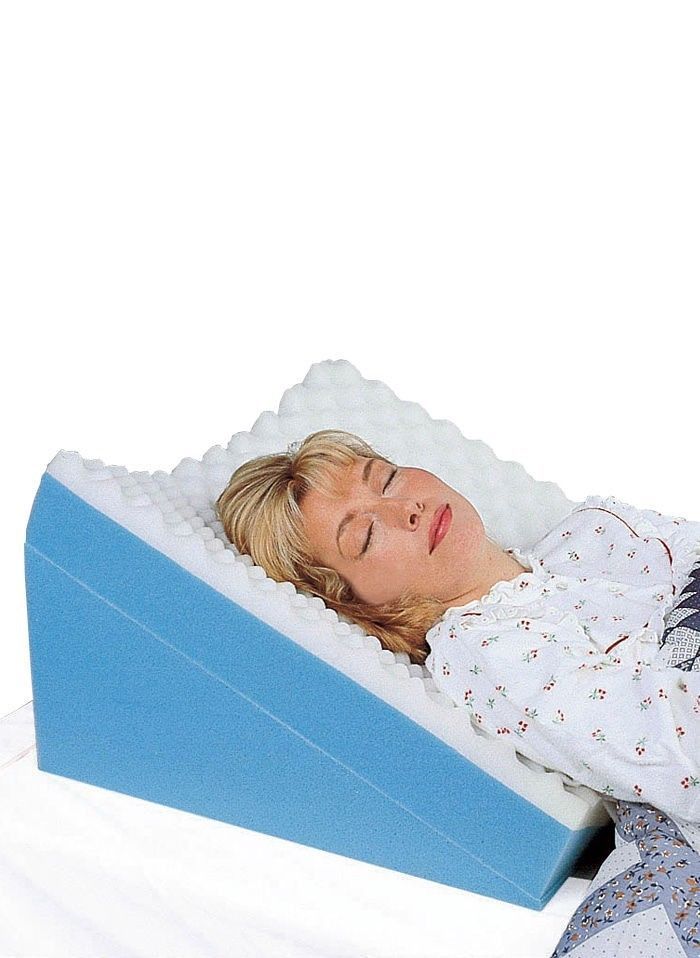 Oz, Oprah, and for fourteen years as the sleep expert on WebMD. Dr. Breus is also the bestselling author of The Power of When, The Sleep Doctor’s Diet Plan, Good Night!, and Energize!
Oz, Oprah, and for fourteen years as the sleep expert on WebMD. Dr. Breus is also the bestselling author of The Power of When, The Sleep Doctor’s Diet Plan, Good Night!, and Energize!
- Position: Combination Sleeper
- Temperature: Hot Sleeper
- Chronotype: Wolf
Proper Sleep Position
Let’s face it, sleep is a big part of our lives, even if we don’t get 8 hours of sleep. But it’s more than you think. The position you sleep in plays a big role in the quality of your sleep, which means it’s time for you to change it.
Different sleeping positions have different benefits. If you are experiencing pain or other health issues, you may need to change positions to help manage it. And while it might not be something you can do overnight, changing your default sleeping position is definitely worth a try.
Taking the time to gradually get into a new sleeping position can be the secret to improving the quality of your sleep. However, if something does not suit you, do not worry about it. You can also try changing your favorite sleeping position to make sure you get the most out of it.
However, if something does not suit you, do not worry about it. You can also try changing your favorite sleeping position to make sure you get the most out of it.
Fetal position
Fetal position involves sleeping on your side with your legs bent close to your body. This is the most popular sleeping position, and for good reason. Not only is it good for lower back pain or pregnancy, sleeping in the fetal position can also help reduce snoring.
However, sleeping in the fetal position has several disadvantages. Make sure your posture is relatively loose, otherwise your comfortable position may limit deep breathing during sleep. Also, if you have any problems with joint pain or stiffness, sleeping in a cramped fetal position can make you feel sore in the morning.
Sleep Tip
If you want to make the fetal position more comfortable, make sure you are free and relaxed in this sleeping position when you are curled up. Keep your legs relatively extended. You can even try sleeping with a pillow between your knees.
Keep your legs relatively extended. You can even try sleeping with a pillow between your knees.
Sleeping on your side
Sleeping on your side is similar to sleeping in the fetal position, but your legs are not drawn to your body. As in the fetal position, sleeping on your side is very beneficial. In addition to reducing snoring, sleeping on your side is great for digestion and can even reduce heartburn.
Despite these benefits, sleeping on your side is not always better. Not only can this cause stiffness in the shoulders, but it can also cause the jaw to tighten on one side.
Place a pillow between your shins to help align your hips and avoid lower back pain.
Is there a right, better side for sleeping?
Depending on your health, it may be helpful to sleep on your left side instead of your right.
10 people took part in a small, long-term study over 2 days. On the first day, participants rested on their right side after a high-fat meal. On the second, they switched to sleeping on the left side. Researchers have found that the right side is associated with increased heartburn and acid reflux, so sleeping on the left side may be more beneficial.
On the second, they switched to sleeping on the left side. Researchers have found that the right side is associated with increased heartburn and acid reflux, so sleeping on the left side may be more beneficial.
Sleeping on your left side can also be helpful in encouraging regular bowel movements. Your small intestine moves waste to your large intestine through something called the ileocecal valve, located on the lower right side of your abdomen. Sleeping on your left side could potentially allow gravity to assist in the process of moving waste through the ileocecal valve.
Sleep Tips
If you prefer to sleep on your side, choose a good pillow to avoid neck and back pain. Sleep on whichever side you feel most comfortable on, but don’t be afraid to switch to another position if your current sleeping position doesn’t work for you.
Sleeping position – prone
If we had to rank sleeping positions, prone might be at the bottom of the list. While this is a good position for snoring or sleep apnea, the benefits don’t extend much further.
While this is a good position for snoring or sleep apnea, the benefits don’t extend much further.
Unfortunately, sleeping on your stomach can cause neck and back pain. It can also put unnecessary strain on your muscles and joints, so you may wake up with pain and fatigue. If you sleep in the prone position, place a pillow under your lower abdomen to help relieve back pain.
Tips for good sleep
To make sleeping on your stomach more comfortable, try sleeping with a thin head pillow or no pillow to reduce extra strain on your neck. You can also try placing a pillow under your pelvis to relieve lower back pain.
Sleeping position – supine
Sleeping on your back provides the greatest health benefits. This protects your spine and can also help relieve hip or knee pain.
Sleeping on your back uses gravity to keep your body aligned with your spine. This can help relieve any unnecessary pressure on your back or joints. A pillow under the knees will help maintain the natural curve of the back.
A pillow under the knees will help maintain the natural curve of the back.
Plus, if you’re worried about keeping your skin looking fresh, sleeping on your back will protect your face from wrinkles.
On the other hand, sleeping on your back can be difficult for those who suffer from snoring or sleep apnea. Sleeping in the supine position can be difficult for those with back pain, so it’s important to make sure you keep your back in the right position.
Sleep advice
If you sleep on your back, try sleeping with a pillow under your knees to relieve back pain and pressure on your spine. If you are overburdened, you can also use an extra pillow to help you breathe easier.
Find the best sleeping position
So how do you determine which sleeping position is best for you? There is no one size fits all approach, so you will need to experiment with several sleeping positions to find one that is both comfortable and makes you feel well rested (and pain free) when you wake up.
We have provided some explanations for each sleeping position, but they will not work the same for everyone. When in doubt, listen to your body. If you just can’t get comfortable enough to sleep in a certain position, don’t force yourself.
Conclusions: what is the correct sleeping position?
The position in which you sleep matters more than you think. Try keeping a sleep diary for a week or two to determine the best sleep scenario for your needs. You can track any patterns in your sleep habits and sleep quality to get a better idea of what works and what doesn’t.
Remember, you don’t need to change your sleeping position unless you have a problem. Do what feels best to you. The most important thing is to make sure you wake up refreshed and ready to go.
What is the best sleeping position? – Article
Whether it’s childhood habits or just personal preference, some people like to sleep on their side, while others like to lie on their back. According to statistics, about 47 percent sleep in the fetal position, which makes this the most common position, 17 percent like to sleep on their stomach, and 13 percent sleep on their side with their arms outstretched, and only 11 percent sleep on their backs. A significant amount of research and expert opinion shows that for most people (but not all!) sleeping on your back may be the best sleeping position.
According to statistics, about 47 percent sleep in the fetal position, which makes this the most common position, 17 percent like to sleep on their stomach, and 13 percent sleep on their side with their arms outstretched, and only 11 percent sleep on their backs. A significant amount of research and expert opinion shows that for most people (but not all!) sleeping on your back may be the best sleeping position.
It is important to remember that there is no one-size-fits-all “ideal” sleeping position for everyone. Instead, we generally recommend sleeping in the position you feel most comfortable in and in a position that provides adequate support for your back and neck.
The ideal sleeping position can help you feel better physically by supporting your spine and keeping your body in the correct position. Sleep reduces stress, increases mental clarity, boosts energy levels, and helps maintain a strong immune system.
Sleep on back
Sleeping on your back provides your head, neck and spine with complete rest during the night. And when you sleep facing the ceiling, you can reduce the chance of nocturnal acid reflux, which can potentially cause long-term damage to your esophagus. However, it is important to note that if you suffer from positional sleep apnea, experts recommend avoiding the back sleeping position; in this case, sleeping on your side will be the best option.
And when you sleep facing the ceiling, you can reduce the chance of nocturnal acid reflux, which can potentially cause long-term damage to your esophagus. However, it is important to note that if you suffer from positional sleep apnea, experts recommend avoiding the back sleeping position; in this case, sleeping on your side will be the best option.
Pros:
- Places the body in a neutral position.
- Allows the head, neck and spine to rest comfortably.
- Helps reduce the symptoms of heartburn and acid reflux.
Minuses:
- Not suitable if you suffer from sleep apnea.
- Some people who sleep on their backs may experience lower back pain. It can also aggravate existing back pain.
Sleeping on your side
It turns out that sleeping on your left side can be comfortable if you suffer from heartburn.
However, lying on your left side may not be the best position for your heart. Your blood flows throughout your body and eventually returns to your heart on the left side. But when you sleep on your left side, you put a lot of pressure on the blood vessels that carry blood to your heart.
Your blood flows throughout your body and eventually returns to your heart on the left side. But when you sleep on your left side, you put a lot of pressure on the blood vessels that carry blood to your heart.
Pros:
- Some may find it convenient
- Ideal for those suffering from acid reflux.
- Helps relieve the symptoms of heartburn.
Minuses:
- Potentially puts strain on the spine, hips and/or lower back.
- Interferes with blood flow to the heart
To maintain the correct physiological position while sleeping on your side, it is recommended to use a reclining pillow. It normalizes blood circulation, relieves swelling, fatigue and heaviness in the legs.
Sleep on stomach
Sleepers on their stomachs tend to put more pressure on their muscles and joints, which can lead to pain, potential nerve problems, and numbness. Sleeping on your stomach is not the best sleeping position because it places stress on your spine, which can aggravate lower back pain. If you sleep on your stomach, it is better to choose a different sleeping position.
Sleeping on your stomach is not the best sleeping position because it places stress on your spine, which can aggravate lower back pain. If you sleep on your stomach, it is better to choose a different sleeping position.
Pros:
The only benefit of sleeping on your stomach is to minimize the chances of you snoring or developing sleep apnea. However, you can get the same benefits from sleeping on your side without all the side effects you might experience while lying on your stomach.
Minuses:
- Puts pressure on muscles and joints
- Creates a load on the spine
- Back Pain: Your spine can shift if gravity presses your belly against the mattress.
- Neck pain: You have to sleep with your neck turned to one side to breathe. Stretching the neck muscles in this way causes pain.
- Hip Pain: If you sleep with one leg on top of the other, such as leaving your left foot on your right calf, this can cause your hips and lower back to curve.


 g., antidepressants and muscle relaxants) and anti-inflammatory drugs (like diclofenac and ibuprofen)
g., antidepressants and muscle relaxants) and anti-inflammatory drugs (like diclofenac and ibuprofen)
